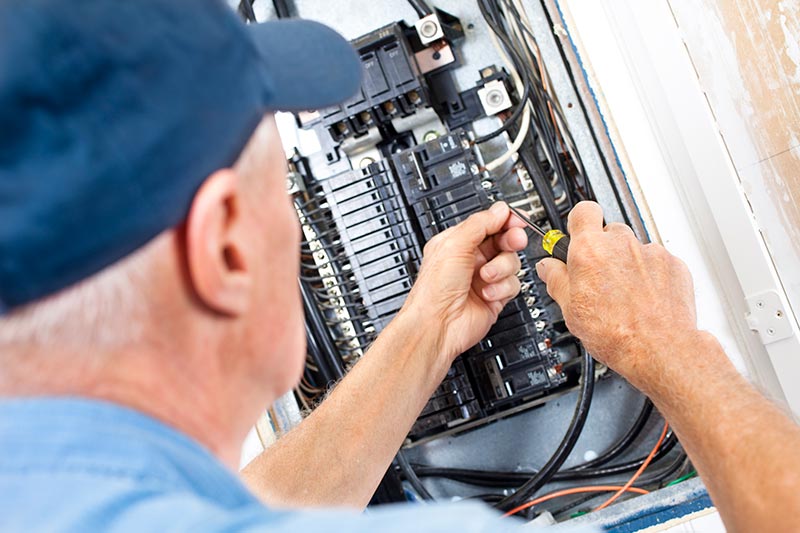For many, the breaker box is tucked away at home, only to be looked at when some lights go out and it’s time to flick a few switches to see if they turn back on. But breaker boxes – otherwise known as electrical panels, fuse boxes, and circuit breakers – are an essential component of a home or business’ electrical system. Repairing or replacing a breaker box is something best left to train professionals, like those at Simply Shocking Shocking, to ensure that all regulatory requirements are met and all safety precautions are addressed.
But what exactly is a breaker box?
The breaker box is responsible for regulating and dividing the electricity supply in a home or business. It’s a steel box containing access to electrical circuits, as well as circuit breakers and fuses that protect electrical wires from overheating.
Essentially, the breaker box is a big switch filled with smaller ones. The various smaller switches are hooked to appliances and lights throughout your home or business. The breaker box is designed to shut off electrical current when something is off, protecting you from an electrical fire.
What causes a breaker to switch off?
One of the more common causes for a breaker to turn off is a circuit overload when more electrical current is being drawn through the wires than they can handle. This causes them to overheat and trip the circuit breaker, which is when it would be time to go in there and flip some switches to see if your lights turn back on.
Another reason your breaker could trip is a short circuit, which is a bit more dangerous than an overload. A short circuit is caused when a hot wire comes into contact with a neutral wire in an electrical outlet, thus sending a large amount of current flowing through the circuit. This creates more heat than a circuit can handle. They can be caused by faulty wiring or a loose connection and can be found thanks to a burning smell near the breaker.
The breaker could also turn off thanks to a ground fault surge, which is similar to a short circuit. In this one, a hot wire touches a ground wire made of bare copper or the side of a metal outlet box, which is connected to the ground wire. This sends more electricity to pass through the circuit, which can’t handle it.
How to know if it’s time to replace your breaker box?
There are a number of ways to tell if it’s the right time to replace your box. A few of them are:
- If your breaker box was damaged
- If the wiring in the breaker box looks loose
- If your circuits keep tripping
- If the electricity in your home or business is not working properly and there is no power outage
- If your breaker box has been exposed to damp or compromised conditions over an extended period of time
Depending on when your home or business was built, replacing the breaker box could be a great way to make the best use of your space. Homes and other buildings weren’t designed decades ago to handle all the electricity we use on a day-to-day basis in modern times. To ensure your home or business has enough juice for all your needs, you might want to look into replacing the breaker box.
What all is involved in upgrading a breaker box?
The first thing that should be done when looking to upgrade a breaker box is to reach out to professionals who know how to do the work safely. Changing an electrical panel isn’t like changing a fuse or doing some re-wiring. It’s dangerous work with potentially-lethal amounts of amperage. If done incorrectly, it can start an electrical fire or leave a loose live wire where it could electrocute someone.
That’s why it’s best to leave this to the experts at Simply Shocking Electric, who have been providing excellent service in the Oregon City, Portland, OR, and Clackamas, OR., area for more than a decade. If you’re thinking of replacing your breaker box, or wondering if it’s time to, reach out to Simply Shocking Electric for a free estimate at 503-309-0866.



